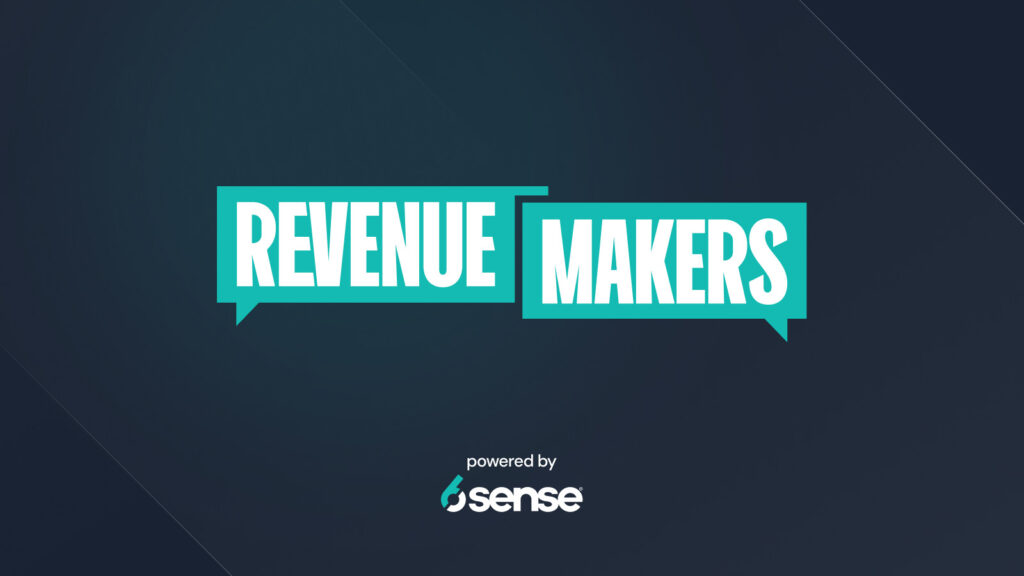Navigating B2B marketing sometimes feels like being stuck in traffic during rush hour. You want to go faster and move around obstacles — but there’s too much in your way. As your frustration peaks, you enter your destination into your car’s GPS, which promptly suggests a detour that bypasses the congestion and offers a faster route. You laugh at your fellow drivers moving at a glacial pace as you veer off to the recommended path.
Just as your GPS relies on real-time traffic data and historical routes to guide you efficiently, predictive marketing uses data analytics and historical customer interactions to steer businesses towards their goals. GPS systems anticipate traffic patterns and suggest alternate routes; predictive marketing analyzes market dynamics and sales cycles to help marketers reach their target audience with precision and relevance.
Let’s delve deeper into how predictive marketing guides teams along the path to finely tuned campaigns.
What is Predictive Marketing?
Predictive marketing is a data-driven approach that uses advanced predictive analytics and machine learning algorithms to forecast future customer behavior and preferences. By analyzing historical data, predictive marketing aims to identify patterns and trends that can be used to predict customer actions like purchasing decisions. Marketers can then proactively tailor their strategies and campaigns to target the right audience with the right message at the right time.
This concept has its roots in the early days of data analysis and customer relationship management (CRM). As technology advanced and we gained access to more abundant data, businesses started to recognize the potential of using predictive analytics to identify qualified leads and engage them with relevant content.
Initially, predictive marketing focused on simple statistical models and basic segmentation techniques. But with the rise of AI, predictive marketing has evolved into a sophisticated discipline that uses complex algorithms and machine learning to generate accurate predictions.
And this concept isn’t going anywhere. Integration with other emerging technologies like augmented reality will further enhance the customer experience and enable businesses to deliver targeted and highly personalized marketing messages.
Examples of Predictive Marketing
Fictional software company AcmeSoft uses historical data and third-party insights to identify patterns and correlations across customers. They discover that technology companies that have between 100 and 500 employees and annual revenues between $10 million and $50 million are more likely to purchase their CRM software. Additionally, they find that accounts in the healthcare industry have longer sales cycles.
With these findings, AcmeSoft’s marketing team tailors efforts by creating campaigns targeting companies within the established employee and revenue range. They also adjust expectations and develop nurturing strategies to engage with healthcare prospects. As a result, they significantly increase lead generation and conversion rates through precise targeting and optimized strategies.
How Does Predictive Marketing Work?
Implementing predictive analytics into marketing campaigns involves a systematic framework that facilitates data-driven decision making.
- Define Objectives: Clearly outline the goals you want to achieve through predictive marketing. This could be improving lead generation or increasing conversion rates. Whatever you decide, having well-defined objectives will guide your efforts.
- Gather Data: Collect and consolidate data from various sources, including customer interactions, website analytics, CRM systems, and external data providers. Ensure data quality and accuracy to generate reliable insights.
- Data Preparation: Cleanse, transform, and organize data, removing duplicates, filling in missing information, and standardizing formats. This step is crucial for accurate predictive modeling.
- Build Predictive Models: Use machine learning algorithms to build predictive models that identify patterns, correlations, and trends in the data. These models can predict customer behavior, identify high-value prospects, and optimize campaigns.
- Validate and Refine Models: Measure accuracy of the models over time. Fine tune parameters, adjust algorithms, or incorporate additional variables to improve performance.
- Implement Predictive Insights: Apply the insights gained from the models to marketing campaigns. Target audiences and tailor messaging based on the identified characteristics and behaviors of high-value prospects.
- Monitor and Iterate: Continuously track the impact of campaigns, tracking key metrics like lead generation, conversion rates, and ROI. Use your findings to refine models and adapt campaigns for an optimized strategy.
Predictive Marketing for Lead Generation
By integrating predictive analytics into marketing campaigns, you can anticipate future trends and identify the most promising leads with precision. Here’s how predictive marketing can transform lead generation:
- Identify potential leads, analyzing past conversion data and customer profiles to determine the characteristics and behaviors of high-value customers.
- Use insights into preferences and buying behaviors of leads to create highly targeted and personalized campaigns.
- Determine the most effective marketing channels and optimal times for reaching potential customers.
- Anticipate market trends and changing customer needs, enabling you to adjust your product offerings proactively.
- Focus resources on leads with the highest conversion potential, reducing waste and increasing efficiency of campaigns.
Predictive Marketing Best Practices
To reach the full potential of predictive analytics, marketers must adhere to certain best practices. Most critical is data quality. Centralize data from various sources, and ensure that the data is clean and comprehensive, checking for inaccuracies and removing duplicates. Errors in source data will lead to inaccurate results. (Think: Entering an address incorrectly into your GPS and having to be rerouted halfway through your drive — it wastes time and is very frustrating!)
You’ll find various predictive models available to use for your marketing strategy — each with its own technique for sorting and using data inputs. Select the appropriate model for the specific needs and nuances of your campaigns. It may help to test different methods to determine which provides the most accurate predictions for your context.
Marketers must also be aware of data privacy when using predictive marketing. All practices must comply with relevant laws and regulations, such as GDPR in Europe and CCPA in California. Always handle customer data responsibly and transparently!
While predictive analytics automate and simplify many aspects of marketing, human insight remains invaluable. Balance automated processes with human judgment, especially in interpreting results and making strategic decisions. Be mindful of ethical implications, avoiding biases in data and models that could lead to unfair targeting or exclusion of certain groups.
Let 6sense Be Your Guide
6sense predictive analytics harnesses the power of AI and big data to direct your marketing efforts toward the most promising prospects, much like your GPS uses satellite data to guide you along the most efficient route. Navigate the complexities of the market, pinpointing the exact location in the buyer’s journey where engagement is most likely to impact an account’s purchase decision.
With 6sense, you gain an aerial view of the market landscape (think a GPS birds-eye view of traffic patterns) that allows you to adjust campaigns in real time. The tool identifies which accounts are actively seeking your products and provides insights into the types of messaging that will most likely engage those accounts.
You know how your GPS detects hidden shortcuts and less congested routes? Yeah, we can do that too. Our platform detects anonymous buying behaviors, allowing marketers to target buyers earlier than competitors.
Ultimately, 6sense removes roadblocks, providing a smoother and more direct path to marketing success.





